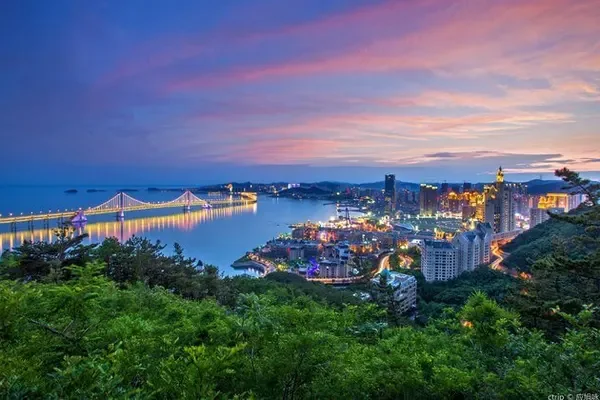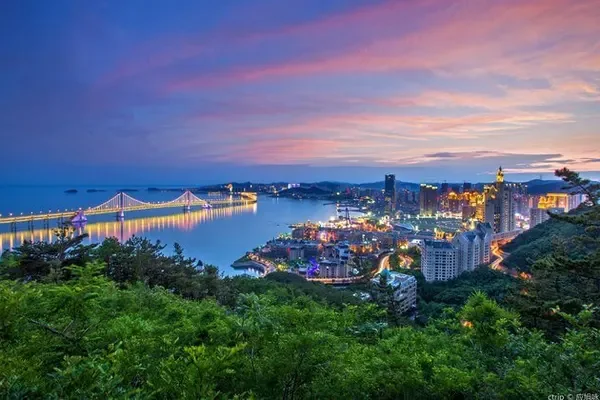In the circle of donkey friends who love hiking, there is a saying: "The wildest Xia Te, the most beautiful Wusun". Wusun Ancient Road is a general term, which refers to the passage from Wusun State to Qiuci State in ancient times, running through the north and south of the Tianshan Mountains in Xinjiang.

This ancient road was once a road of love across the Tianshan Mountains. More than two thousand years ago, King Qiuci fell in love with Princess Shi, the younger brother of the Wusun Kingdom. For love, King Qiuci had to cross the Tianshan Mountains, relying on horses and human legs. It also made the Kucha Kingdom the best neighbor among the thirty-six countries in the Western Regions and Dahan.
Today's Wusun Ancient Road connects the Junggar Basin in the north and the Tarim Oasis in the south. There are three routes in a broad sense. The east line is the current Duku Highway, and the west line runs from Ili Zhaosu to Aksu Wensu. Because it passes through Shater, it is called the Shatter Ancient Road.

The middle line is the real Wusun ancient road, the whole journey is about 120 kilometers: Qiongkushitai Village - Qiongdaban - Kekesu River - Paradise Lake - Akbulakdaban - Heiyingshan Pass, roughly 6 sky.
Some people say that on the Wusun ancient road, you have walked through the vast alpine meadows, shuttled through the beautiful Xinjiang grasslands, seen the majestic snow-capped mountains, and greeted the mysterious Paradise Lake before you have really been there. Tianshan. It is true that the various landscapes covered along the way are breathtaking.

From June to October every year, the Wusun Ancient Road is the most beautiful and the most suitable season for hiking, especially from late July to early September. I was also fortunate to follow the team into this ancient road that only a few people can set foot in, to explore the beautiful secrets deep in the Tianshan Mountains of Xinjiang.
DAY1: Qiongkushitai Village - Lianghekou Log Cabin Camp, 15 kilometers on foot
Drive from Yining through Tekes to Qiongkushitai Village. Along the way, you can see alpine grasslands, white snow fields, golden wheat waves and ancient villages.
Qiongkushitai Village is a Kazakh herdsman village. Almost all the houses in the village are wooden buildings. The village is surrounded by mountains, and the houses are built along the water. The boundless grassland is mixed with the fresh fragrance of flowers, revealing the most original ecological atmosphere. No one knew of its existence before. Since the Wusun Ancient Trail hiking trail has become popular in recent years, it has only become familiar to outsiders.

Pursue the Qiongkushitai River upstream, and quickly pass through canyons, woods and gentle slopes. Due to the low altitude, there is not much rest along the way, and it is still an easy walk. The changing scenery on the road allows one to see the four seasons at a glance. The stream runs through the pine forest, the snow-capped mountains in the distance line the sea of clouds, and occasionally Kazakhs are grazing, and the herds of cattle and horses are scattered in twos and threes.

Just stop and look at the patting, pass through several mountain pastures, cross a small bridge, and finally arrive at the landmark building on the ancient road-a log cabin at an altitude of 2,850 meters. The night temperature in the valley is very low, the moonlight is hazy but very seductive, and the dotted tents are in harmony with the pure starry sky. It is rare to enjoy a slow time alone.
DAY2: Log cabin camp - Qiongdaban - Kekesu River camp, walking distance 20 kilometers
The sun has not yet risen in the morning, and the chill is still there. As the terrain continues to rise, the donkey friends in the team who are not physically fit have been distanced. To cross Qiongdaban, you need to climb over two sections of hillsides, and there is a huge flat land in between. The mountain is not too steep, and there are large and small gravels all over the ground, pay attention to sprained feet.

Accompanied by heavy panting, I finally boarded the Qiongdaban at an altitude of 3,700 meters. What comes into view is the clear blue sky under the snow line, and the rolling mountain peaks are unobstructed. When bathed in the long-lost sunshine, there is a refreshing feeling of rebirth.

Go over Qiongdaban and walk towards the canyon, and you will see the Kekesu River. On both sides of the river is the southern border and the northern border. The Kekesu River camp where we camped today is also where the locals who run the zipline business live.
The team chose to camp next to the yurt of the herdsman's house and cook with the pot of the herdsman's house. Facing the roaring Koksu River and eating hot food in the canyon, there is a wonderful feeling.

DAY3: Kekesu River - Zip rope across the river - forest management station camp, walking distance 25 kilometers
The Kekesu River is noisy day and night, the river is about 30 meters wide, and the cost of crossing the river by zip cable is 200 yuan per person, including luggage. After all the people and horses crossed the river, they went down the Kekesu River and continued to trek alternately between the river beach and the mountains. Looking at the river in the valley on the right from a distance, it is slightly whitish, probably mixed with weathered materials in the rocks, and thick silt has been deposited on the river bank for many years.

Then enter the primeval forest, turn over a small pass, and walk out of the dense forest. Soon came to the river again, where the stream was clear, the trees were verdant, and I was intoxicated by the scenery of the south of the Yangtze River beyond the Great Wall, when suddenly a broken tree lay across the river. The rush of water, the kind that can wash people away. Unable to wade directly across the river, you can only choose to ride a horse and carefully protect your belongings.

In the ensuing journey, I encountered such rivers more than a dozen times, so I no longer panic after learning from the past. The tension and excitement of crossing the river coupled with the continuous high altitude made me lay down tired when I arrived at the campsite, went to bed early after eating, and looked forward to the alpine meadow tomorrow.
DAY4: Forest Management Station Camp - Paradise Lake, 15 kilometers on foot
Up the Akbulak Valley, through alpine pastures, the scenery becomes increasingly desolate as the altitude rises. The green is fading, and there are mountains and rocks all around, which seem to be difficult to climb. On the way, I met donkey friends who crossed in reverse, encouraged us not to be discouraged, excitedly described the beauty of Paradise Lake, and instantly had the motivation to move forward again.

When looking at the road in the distance, it seemed that there was no end, and after a turn, a clear and deep lake came into view. Paradise Lake, also known as Akkul Lake, is a relatively rare alpine large lake in Xinjiang. It lies quietly in the snow-capped mountains and connects Akkul Daban and Tianshan Mountains.
In the afternoon, the surface of the lake shimmered, and I might have seen the most beautiful view of Paradise Lake. Standing by the lake, I wonder if there is a snow-white flying dragon jumping out of the water, circling around the surrounding snow-capped mountains, and then going away.

After sunset, before the moon comes out, the stars of Paradise Lake are the protagonists. After the moon climbs up, it will illuminate the entire snow-capped mountains and the lake. This is another scene. I don't believe in heaven, but I clearly feel like walking into heaven.

DAY5: Paradise Lake - Akbulak Daban - Boozikrik Valley, 30 kilometers on foot
Turn from the campsite on the south bank of Paradise Lake to the east side, and circle along the lake. The mist shrouds the mountains on the other side, which is unpredictable. Looking at the not too big Paradise Lake, I walked for a long time. After about one kilometer, we arrived at the famous Hukou Re-exit, which attracted countless hiking enthusiasts to check in. When the weather is good, you can see the Paradise Lake with its own reflection.

Afterwards, they ascended violently and crossed the 3,900-meter Akbulak Daban. Although the top was right in front of them, they could only take one step at a time. Xia Daban entered the Booziklik River Valley, and then crossed the river frequently, and the road ahead was extremely difficult.
DAY6: Booziklik River Valley - Heiying Mountain Goukou - Kuqa, walking distance 23 kilometers
Continue to hike along the Booziklik River Valley. Although there is only one river, it needs to be waded back and forth many times. Be careful every step you take, for fear of being washed away by the river. I happened to meet a herdsman who was driving his flock across the river, just to see how the lamb passed.

After wading up the stream and crossing the river many times, I gradually gained experience. The stream is no longer daunting. It requires concentration and the team fights together.
In different parts of the river beach in the valley, besides the strange rocks that can be seen everywhere, there are also green sandy dates, purple wild wolfberry, red firethorn and other plants. We searched for stones all the way, and picked wild fruits all the way to satisfy our hunger.
After leaving the Heiying Mountain Pass, it seems to have returned to the world. The subsequent itinerary was to take a car from here to Kuqa. I stayed in Kuqa for a few days and took a good walk around.
DAY7: Kuqa
Kuqa, known as "Kuicha" in ancient times, has been an important commercial and cultural center since the Han and Tang Dynasties. Thousands of years later, this old city full of ancient and exotic customs is still bustling and bustling.

Walking in the old city of Kuqa, there are not many Han people in sight. This is where the Uyghurs gather. The colorful doors and windows form a strong color impact with the Gobi landform, which is very ethnic. Aunts basking in the sun outside the grocery store, children playing on the side of the road, bearded grandpas shouting in front of the kebab shop... People are leisurely maintaining the ancient way of life.

In addition to the characteristic architecture and cultural customs, the Kuqa Grand Bazaar is not to be missed. Pottery, dried fruits, gold and silver ornaments, exquisite woolen blankets and other products are dazzling, and it is good to pick one or two as souvenirs.
Some pictures come from the Internet


